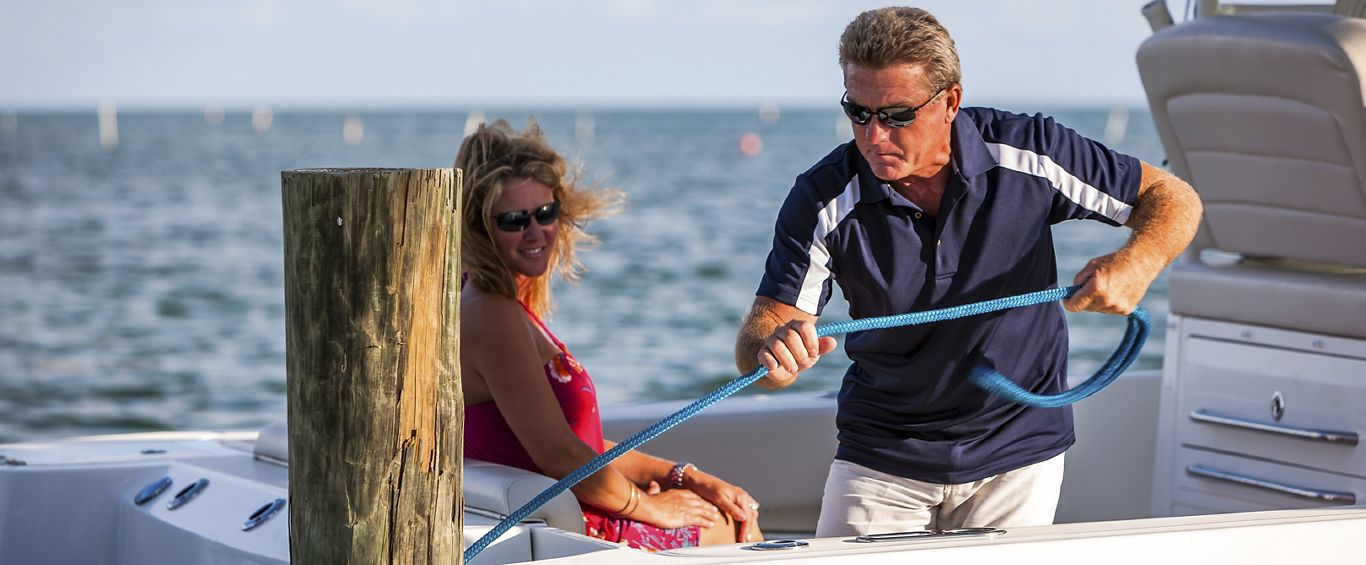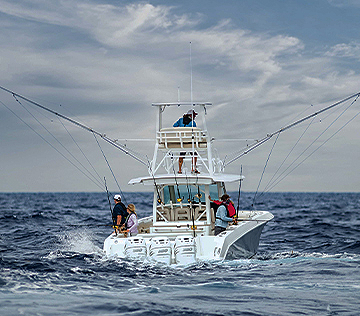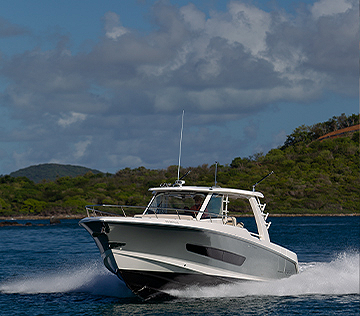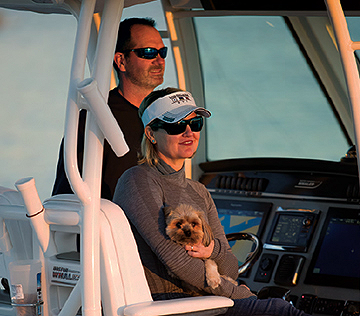
Dock Line Knots 101
Most common boat knots to know
Whether securing a boat to a dock or tying a cooler in place in the cockpit, boaters need to know knots and hitches. There are dozens to learn but what are basic boating knots? The following four that will come in handy on your Boston Whaler.
Cleat hitch
Tying a boat to a dock is critical knowledge because you’ll need it at the boat ramp dock, the fuel dock and your home dock – all places where you’ll need to know how to use dock lines. Pre-made dock lines have a loop on one end and a straight bit of whipped (sewn and secured) line on the other called the “tag end”. Put the looped line around a cleat on your boat and then take the other end to the dock. You can toss or hand it to someone already on the dock or hold the line while stepping off the boat yourself.
Tie a cleat hitch to the cleat on the dock. A cleat hitch isn’t technically a knot because it secures a line to some other object rather than tying onto itself. Start by wrapping the line one full loop around the base of the cleat under what’s called the “horns”. Then cross the top of the cleat once and loop it under the far horn. Cross the top of the cleat again but this time, use your other hand to create a loop in the line upside down and toward yourself. Put that loop on the opposite horn and cinch down. Most situations will require only this but for extra security at a surgy dock, repeat that last upside-down loop on the opposite horn.
Clove hitch
The clove hitch secures a line to a rail and is great for tying fenders on before approaching a dock. To tie a clove hitch on to a rail without an open end, wrap the line around the rail one time. As you begin wrapping a second time, cross the first wrap and pass the tag end underneath the second wrap. Cinch down. To tie a clove hitch on an open rail or pole, make two loops and then pass the forward one behind the back one. Place the two over the pole and tighten. This is the faster way to tie a clove hitch but will only work if you have access to the open end of whatever you’re tying to.
Half hitch
A half hitch can be its own knot, but it’s mostly used to secure the end of the line after tying another knot, just to be secure. Also called an overhand knot, the half hitch is great for lighter jobs but never to secure a boat to a dock. Pass one end over the main line and pull. For more security, tie additional half hitches one after another.
Bowline
A bowline is a real knot (rather than a hitch) and its one of the most useful knots in boating. A bowline creates a loop in a line so you can secure the boat to a piling, attach two lines together if your dock lines aren’t long enough, or create a loop in a straight line to secure around your own cleat. The great thing about a bowline is that it can be untied fairly easily even after it has been under load. Make a loop in the line a foot or more from the end and then pass the tag end up through the loop you made. Continue to wrap the end around the line above the loop, turn it around and back down through the loop. Cinch down tight. To untie, you just “break the knot at the neck” or where it ties onto itself.
Learning how to tie boating knots is easy with various websites and apps. Try AnimatedKnots.com or 3Dknots.com. Nothing will make you saltier (and handier) than a little knot knowledge.
--
This is for general information purposes only. Your use or reliance on any of the information in this Blog is solely at your own risk. Under no circumstance will we have any liability for any loss or damage of any kind incurred as a result of the use of any of the information provided.
Options and features mentioned subject to change. Please confirm availability of all accessories and equipment with an authorized Boston Whaler Dealer.



